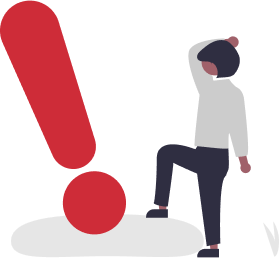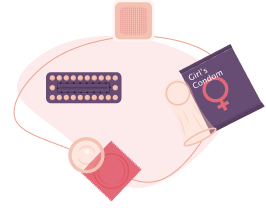
Combined Oral Contraceptive Pills (COCs)
- Combined oral contraceptive pills (COCs) are often referred to as “the pill” or “pills”.
- These pills contain synthetic hormones estrogen and progestin which are similar to natural homes produced in a woman’s body.
How it works
The pill works primarily by preventing the release of eggs from ovaries (ovulation).
Common Types of COCs
The pill is usually provided in packs of 21 or 28 tablets. In the 28-pill pack, only the first 21 pills are active, with the remaining seven being inactive.
Effectiveness
- When used consistently and correctly, the pill is 99% effective in preventing pregnancy.
- Effectiveness depends on the user: Risk of pregnancy greatest when a woman starts a new pill pack 3 or more days late, or misses 3 or more pills near the beginning or the end of a pill pack.
- For greatest effectiveness, a woman must take one pill every day.
Advantages
-
- COCs are highly effective if used correctly and consistently.
- No delay in return to fertility after the pill is stopped.
- Help to reduce heavy and painful periods.


Limitations
- It is important to note that the pill must be taken daily at the same time each day, whether or not a woman has sex that day.
- Does not protect against HIV infection (AIDS) and other sexually transmitted infections (STIs).
- May reduce milk production in breastfeeding women.
Side Effects experienced by some users
- Changes in bleeding patterns such as spotting, bleeding in between menstrual periods, or lack of monthly periods
- Some women may experience nausea, mild headaches, dizziness, breast tenderness, weight change, mood changes, or weight changes

Juu life ni kujipanga!
Popular questions
Within 120 hours (5 days) after unprotected sex. It’s the most effective when taken within 12 hours.
Lorem ipsum dolor sit amet, consectetur adipiscing elit. Ut elit tellus, luctus nec ullamcorper mattis, pulvinar dapibus leo.
Lorem ipsum dolor sit amet, consectetur adipiscing elit. Ut elit tellus, luctus nec ullamcorper mattis, pulvinar dapibus leo.
Lorem ipsum dolor sit amet, consectetur adipiscing elit. Ut elit tellus, luctus nec ullamcorper mattis, pulvinar dapibus leo.
Lorem ipsum dolor sit amet, consectetur adipiscing elit. Ut elit tellus, luctus nec ullamcorper mattis, pulvinar dapibus leo.



